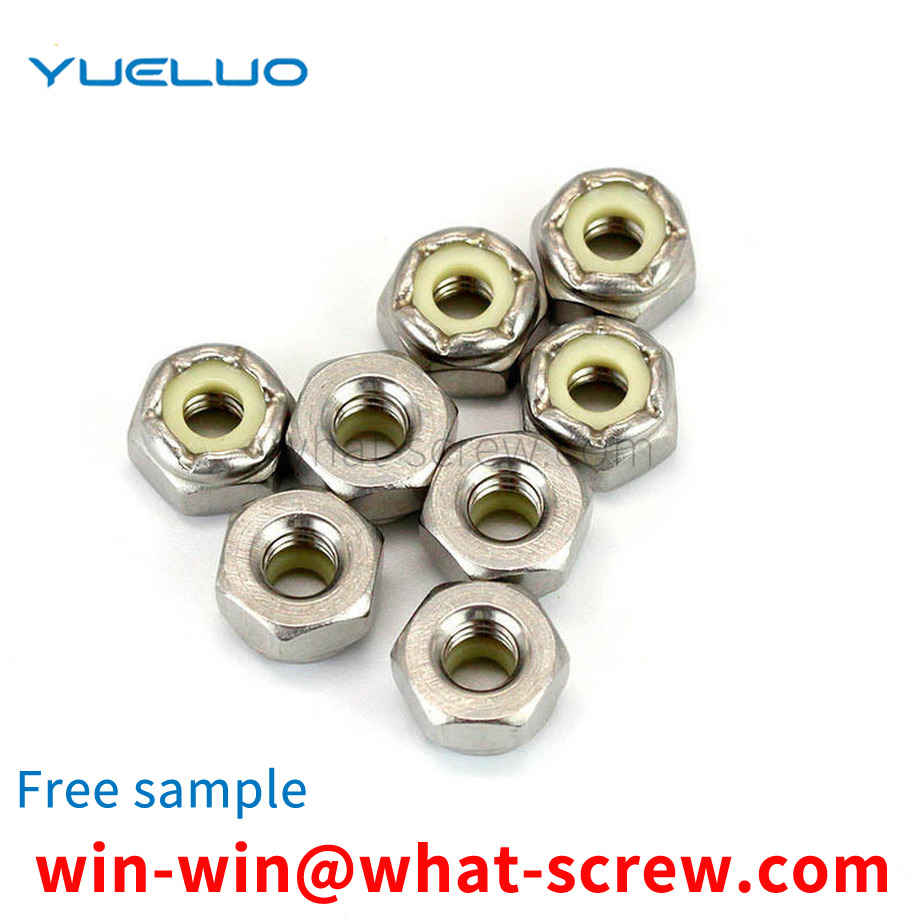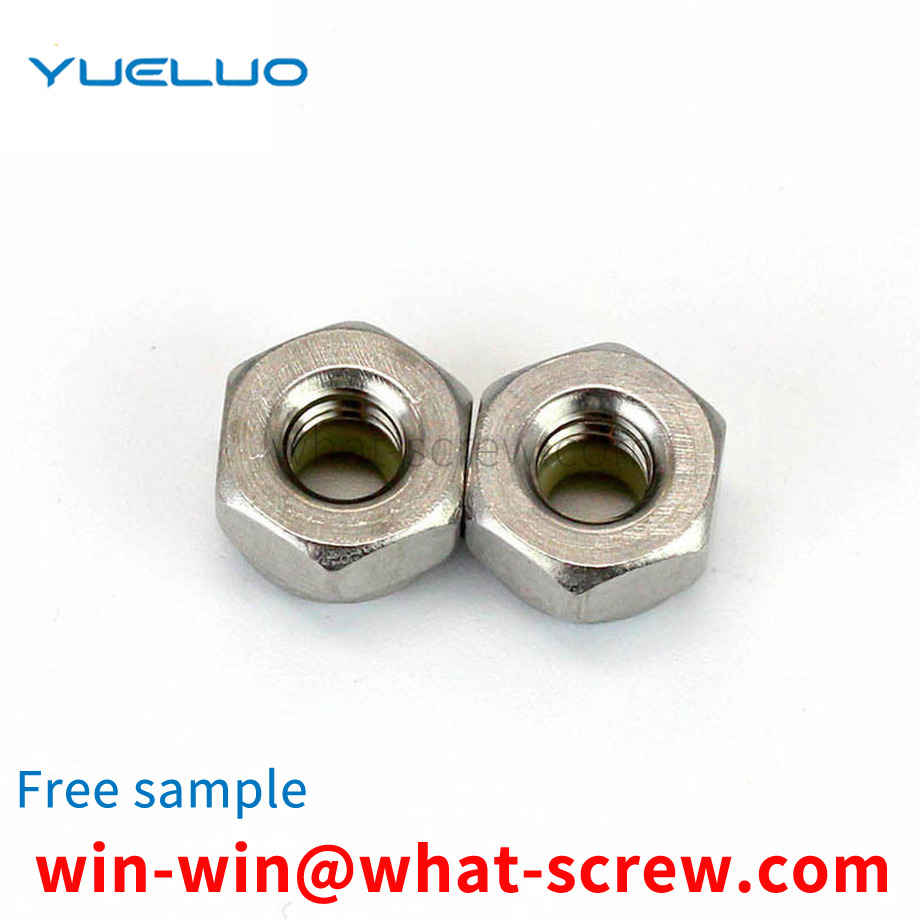In the process of our transformation and upgrading from big manufacturing to strong manufacturing, the talents of the main body of innovation play an important catalytic role, including a large number of engineers, and drawings are a necessary expression tool for their practical innovation. Engineering drawing courses, as the basic courses of engineering colleges, play an important role in students' ability to read and output engineering drawings, and are directly related to the innovation ability in future work practice.
Anti-corrosion technology Stainless steel screws are made of metal, and there are four main methods for metal anti-corrosion, namely the properties of the material itself, the environment of use, the interface between materials and the environment, and the improvement of the metal structure design. If a complete anti-corrosion alloy is used to make stainless steel Screws, unless there is a special need, are not cost-effective in terms of economics, and it is also impractical to completely isolate the appearance of the screw from environmental elements that can cause corrosion. Improving the metal structure design can improve the influence of special circumstances under certain conditions, but the design of most stainless steel screws cannot be fully corrected, and its maintenance effect is not permanent, so this method cannot basically solve the problem, as long as it is on the surface. Top anti-corrosion, that is, surface anti-corrosion treatment is the most widely used method. The anti-corrosion treatment on the surface of stainless steel screws refers to the use of various methods to apply a protective layer on the metal surface. The purpose of avoiding or mitigating corrosion. The protection layer should be able to meet the following requirements: 1. Corrosion resistance, wear resistance, high hardness, 2. The structure is tight, intact, and the pores are small. 3. It has strong separation and good adhesion with the base metal. 4. It is evenly distributed and has a certain thickness. The maintenance layer is usually divided into two types: metal coating and non-metallic coating. Metal coating refers to the use of metal or alloy with strong corrosion resistance to form a maintenance layer on the surface of metal that is easy to corrode. This coating is also called plating. There are quite a few methods and varieties to produce metal coatings, the most common of which is electroplating, followed by molten metal immersion plating (hot dipping) and chemical surface treatment. Non-metallic coating refers to the use of organic polymer materials such as paint and inorganic materials such as ceramics to form a protective layer on the surface of metal equipment or parts. The protective layer can completely isolate the base metal from the environmental medium and prevent the base metal from corrosion due to contact. Corrosion is formed in the medium of stainless steel standard parts.
DIN6796 Disc Spring Washers (HDS Series) are lock washers designed for bolted and screwed connections. It is designed and manufactured according to DIN 6796 for the connection of medium or high strength bolts and screws. High bearing loads and elastic recovery make the HDS series very effective, and the bolt tension can withstand slack due to: wear of consumables, creep, relaxation, thermal expansion, contraction, or compression of seals. The HDS series increases the elasticity of the screw several times. It can effectively replace the ordinary spring washer, but it is not suitable for the combination of lock washer and flat washer.
Although there are many types of self-tapping locking screws, they all have the following main characteristics: (1) Generally, they are made of carburized steel (accounting for 99% of the total products). Also available in stainless steel or non-ferrous metals. (2) The product must be heat treated. Carbon steel self-tapping screws must be carburized, and stainless steel self-tapping screws must be solution hardened. In order to make the self-tapping screw meet the mechanical properties and performance required by the standard. (3) The product has high surface hardness and good core toughness. That is, inner softness and outer rigidity. This is a major feature of the performance requirements of self-tapping screws. If the surface hardness is low, it cannot be screwed into the matrix; if the toughness of the core is poor, it will break as soon as it is screwed, and it cannot be used. Therefore, inner softness and outer rigidity are the requirements for self-tapping screws to meet the performance requirements. (4) The surface of the product needs surface protection treatment, generally electroplating treatment. Some product surfaces require phosphate treatment (phosphating). Such as: wall panel self-tapping screws are mostly phosphating. (5) It is produced by cold heading process. It is recommended to use high-speed cold heading machine and high-speed thread rolling machine or high-speed planetary thread rolling machine to ensure product quality. The self-tapping screw produced in this way has a well formed head and high thread quality.
The diameter, length and quantity of the stud bolts shall meet the requirements, and the type and material of the stud bolts shall be determined by the grade. There are two types of commonly used stud bolts (also known as full-threaded studs). The thread is divided into two types: coarse thread and fine thread. The coarse thread ordinary thread is expressed by M and the nominal diameter, and the fine thread ordinary thread is expressed by M and the nominal diameter × pitch. The fastener standard stipulates that M36 bolts use coarse thread, M36 and above diameters can use fine thread, and the pitch is 3. bm=1d studs are generally used for the connection between two steel connected parts; bm=1.25d and bm=1.5d studs are generally used between cast iron connected parts and steel connected parts The connection between the two; bm=2d double-ended stud is generally used for the connection between the aluminum alloy to be connected and the steel to be connected. The former connector has internal threaded holes, and the latter connector has through holes. The threads at both ends of the equal-length studs need to be matched with nuts and washers, and are used for two connected parts with through holes. One end of the welding stud is welded on the surface of the connected piece, and the other end (threaded end) passes through the connected piece with a through hole, and then the washer is put on, and the nut is screwed on, so that the two connected pieces are connected as a whole.
We have many years of experience in the production and sales of screws, nuts, flat washers, etc. The main products are: galvanized hexagonal lock nuts, countersunk head hand-tightening bolts, cup head cylindrical head round head countersunk head 12.9, flange nylon lock nuts, etc. products, we can provide you with the right fastener solution for you.



















 Service Hotline
Service Hotline




